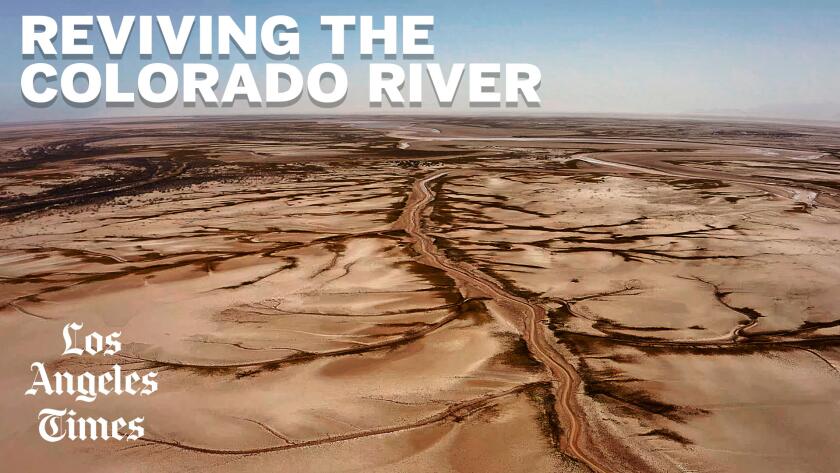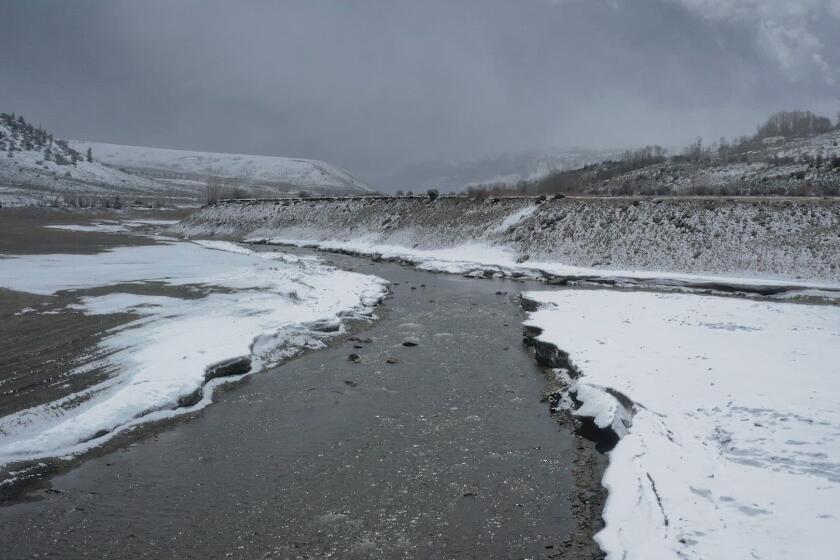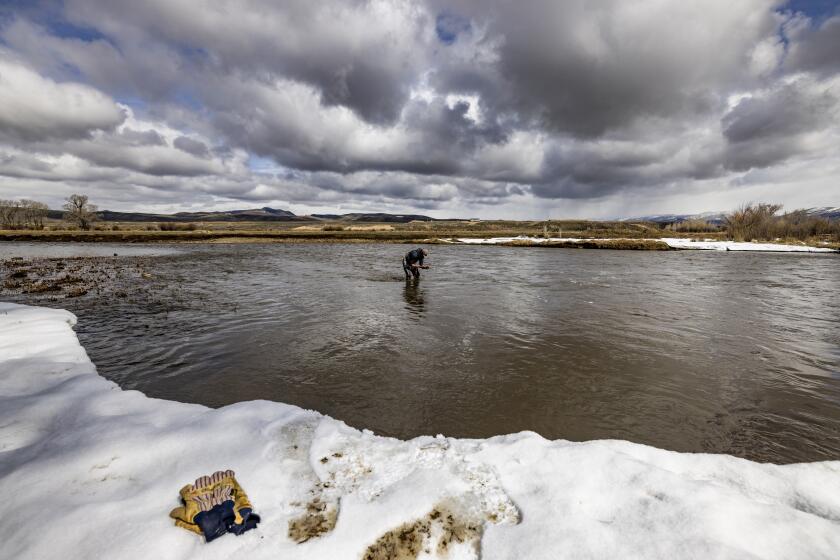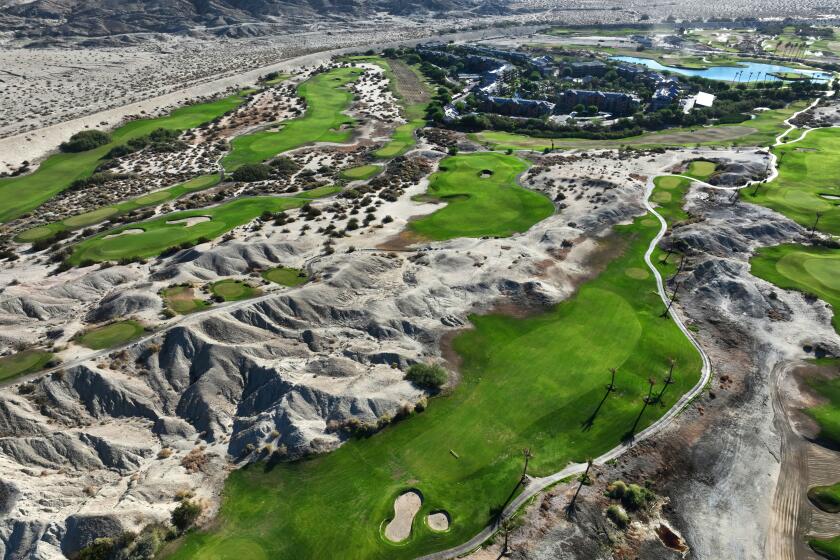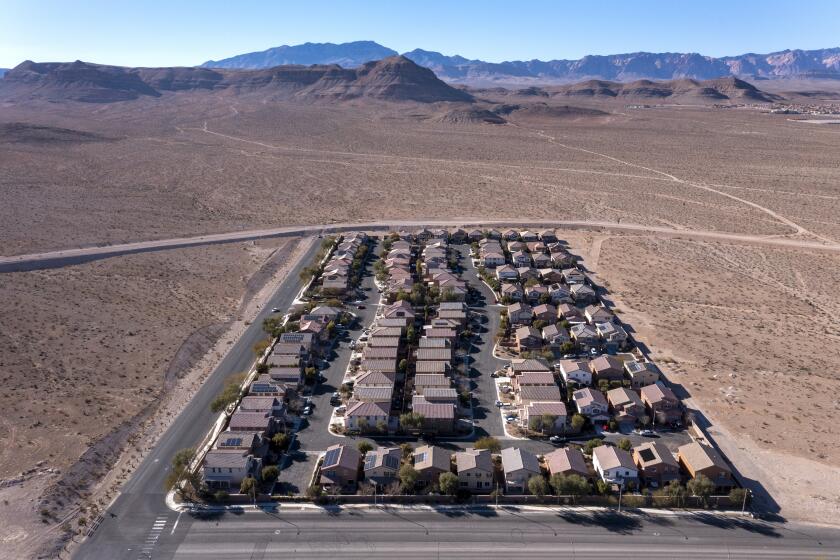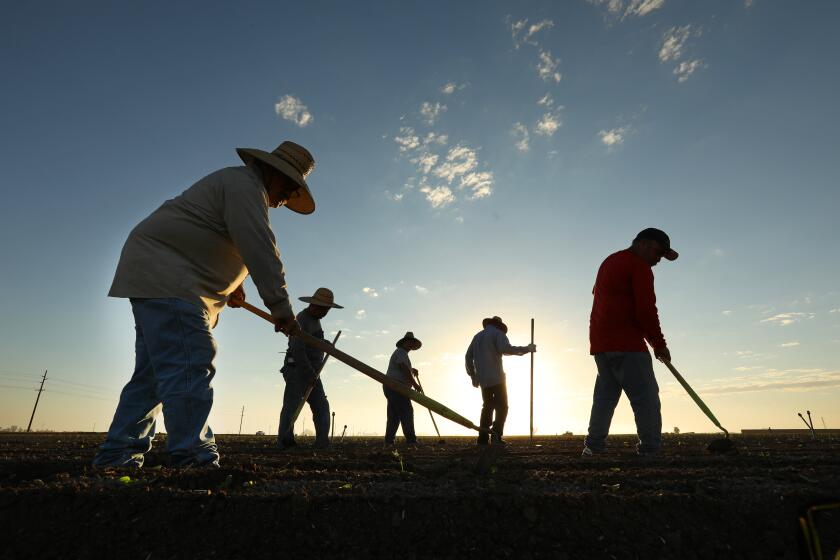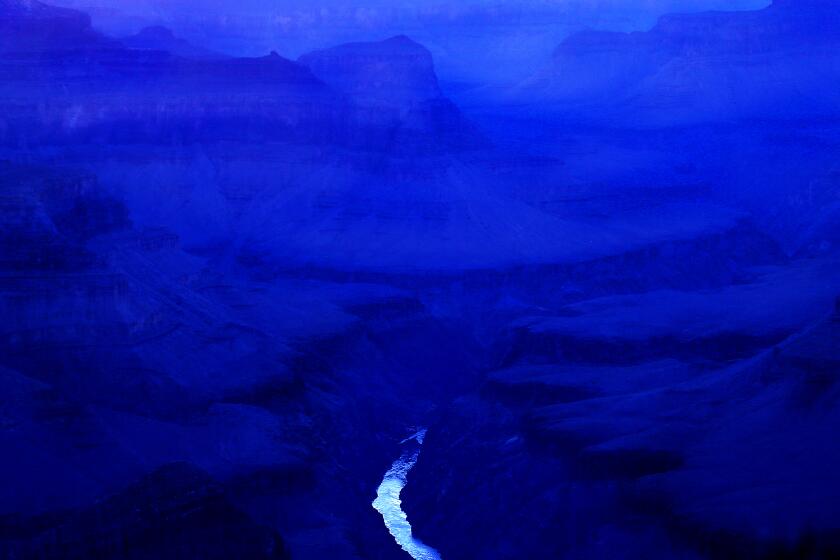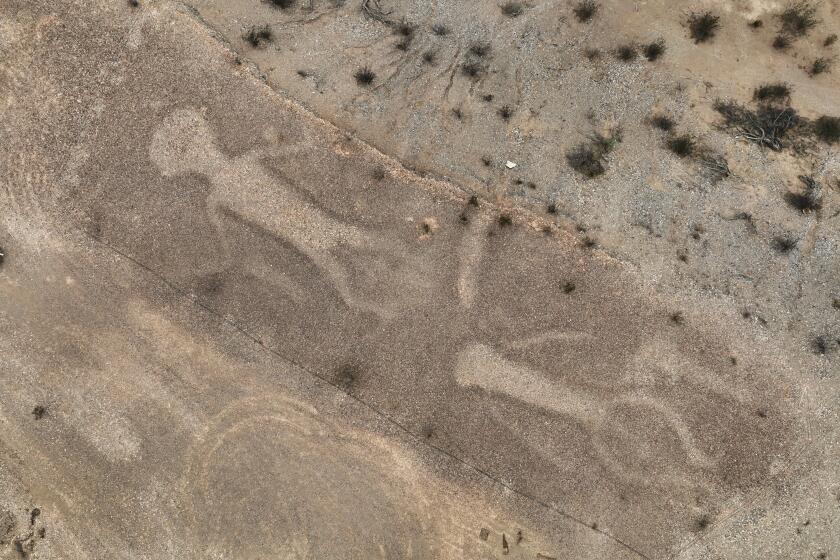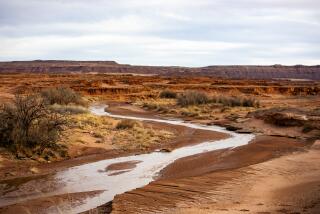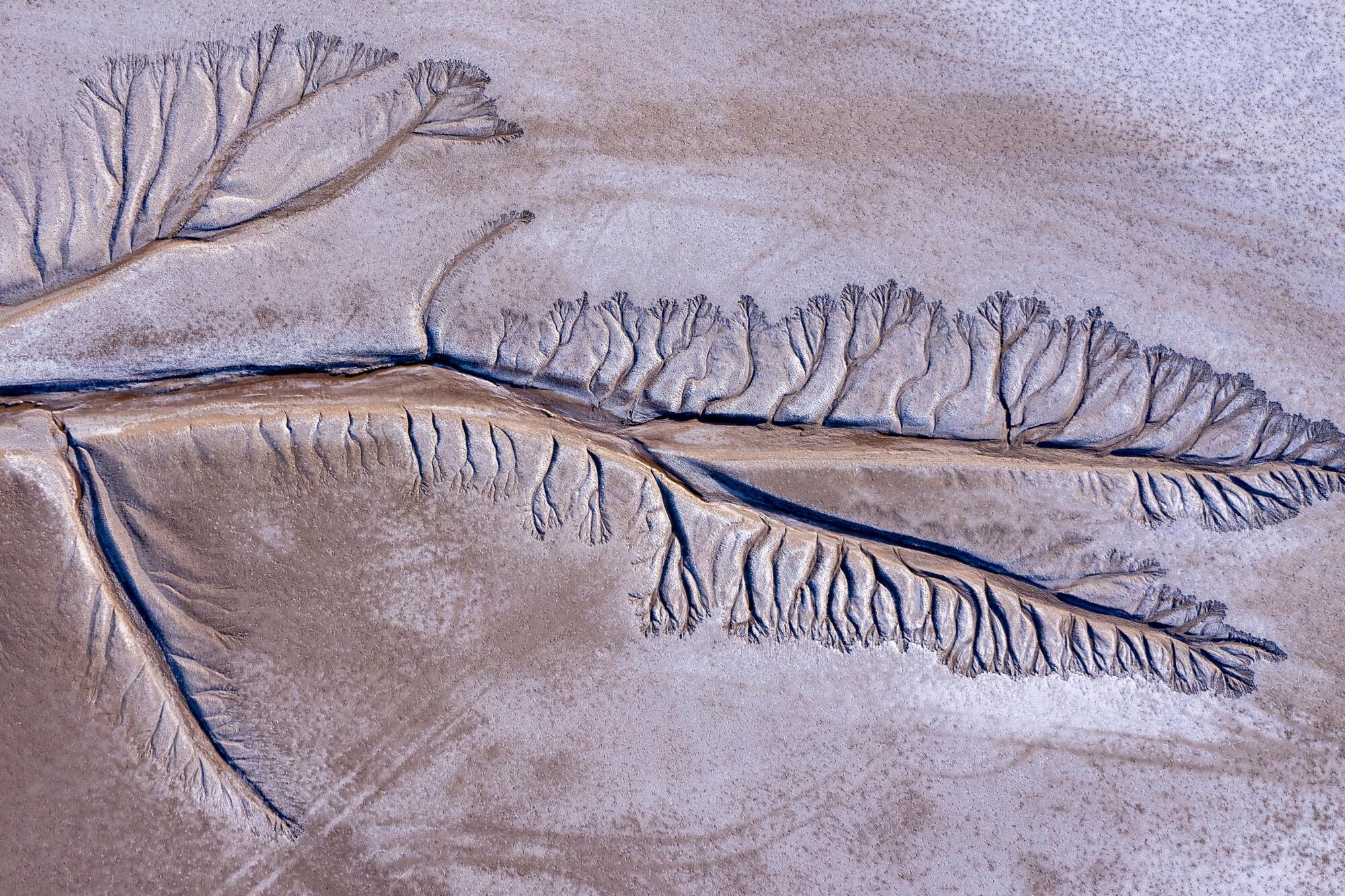
LOS ALGODONES, Mexico — When the Colorado River reaches the U.S.-Mexico border, it pushes up against Morelos Dam. Nearly all the remaining water is shunted aside into an immense canal and flows toward the farmlands and cities of Baja California.
South of the dam, the last of the river disappears in the desert.
The sandy riverbed meanders on through fields of wheat, hay, cotton and vegetables, and curves past the town of San Luis Rio Colorado, where for years little or no water has flowed beneath its bridge.
Mexico is entitled to receive 1.5 million acre-feet of water per year under a 1944 treaty. But in recent agreements with the U.S., Mexico has also agreed to take part in reductions when there is a shortage.
Last year, Mexico’s share was cut by 5%. This year, it will lose 7% of its water.
For decades, so much water has been diverted to supply farms and cities that the Colorado River has seldom met the sea and much of its delta in Mexico has been reduced to a dry riverbed, with only small remnants of its once-vast wetlands surviving. (Albert Brave Tiger Lee / Los Angeles Times)
A group of farmers met recently at the office of the National Water Commission in Mexicali to hear from government officials and experts about what the reductions mean, and to discuss ways of conserving. Miguel Ángel Rodríguez Todd, the agency’s regional director, spoke to the group.
“The Colorado River Basin is facing an extraordinary drought, which affects both the United States and Mexico,” Rodríguez told the farmers, explaining the reduction in supplies.
Colorado River in Crisis is a series of stories, videos and podcasts in which Los Angeles Times journalists travel throughout the river’s watershed, from the headwaters in the Rocky Mountains to the river’s dry delta in Mexico.
He said climate change is shrinking the river at its source, and that requires efforts to adapt.
“We must strive to improve water management,” Rodríguez said. “We have to improve and move towards efficiency.”
The workshop covered topics including measuring flows and switching crops to save water.
“We have to begin to act,” said Carlos de la Parra, who leads the environmental nonprofit group Restauremos El Colorado. He told the farmers that if the shortage continues to worsen, even larger cuts may come, and they will need to adapt by becoming more efficient.
The Colorado River is approaching a breaking point, its over-tapped reservoirs dropping. Years of drying have taken a toll at the river’s source in the Rockies.
“We have the same problem as you, only our crop is the cultivation of ecosystems,’’ De la Parra said.
His group is one of six organizations in a coalition called Raise the River, which focuses on restoring flows in the Colorado River Delta.
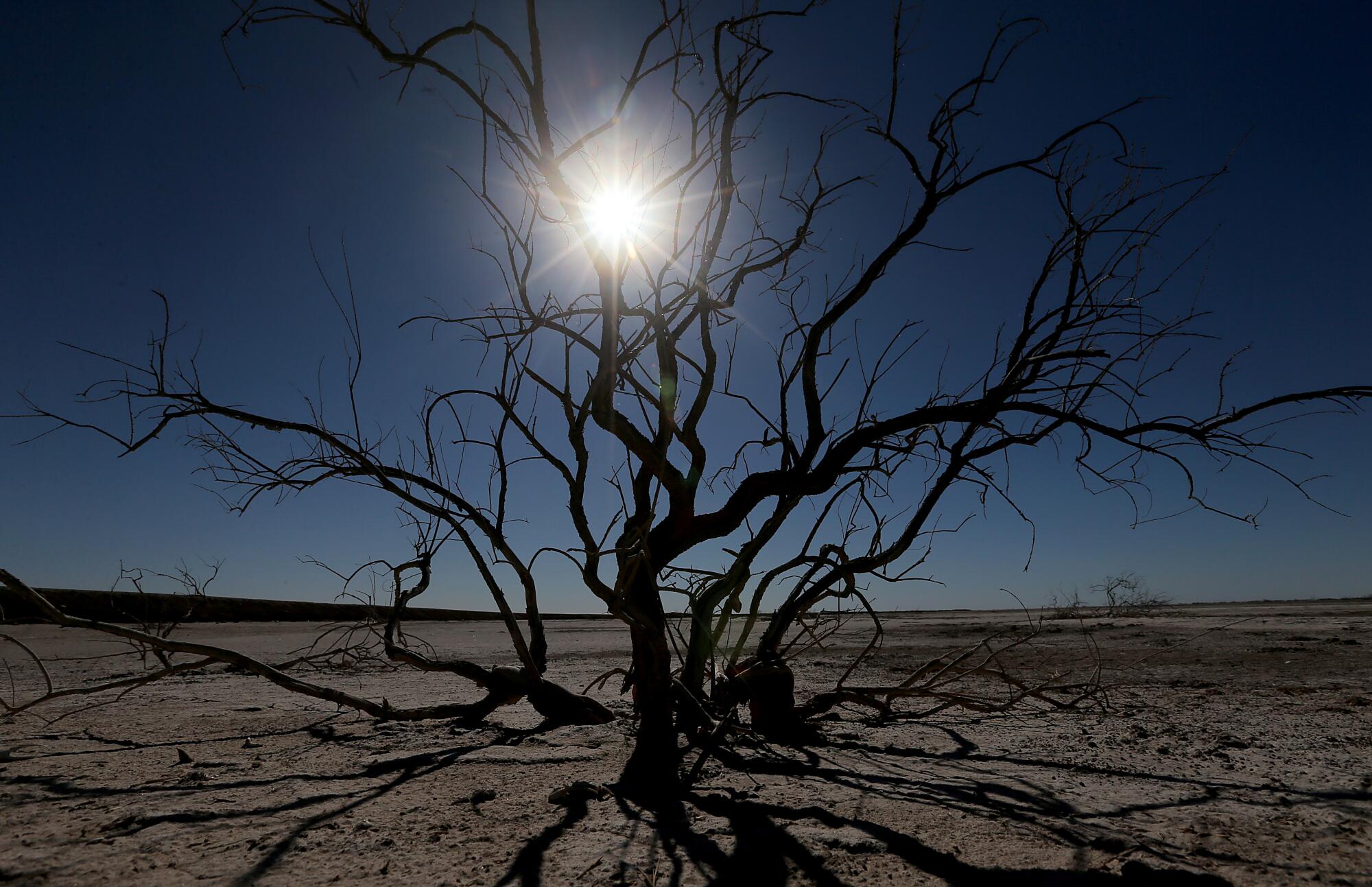
More than a century ago, the river’s delta spread across 1.9 million acres of wetlands and forests. The conservationist Aldo Leopold, who canoed through the delta in 1922, described it as “a hundred green lagoons” and said he paddled through waters “of a deep emerald hue.” He described it as an oasis that teemed with fish, birds, beavers, deer and jaguars.
In the years after his visit, the river was dammed and its waters were sent flowing in canals to farms and cities.
For decades, so much water has been diverted that the river seldom meets the sea. Much of the delta has shriveled to stretches of dry riverbed, with only small remnants of its wetlands surviving.
Restauremos El Colorado manages one of three habitat restoration areas in the delta, where native trees that were planted six years ago have grown into a forest that drapes the wetland in shade.
Last spring, a stream of water was released from a canal and flowed into the wetland, restoring a stretch of river where previously there had been miles of desert sand. The water was released for a second straight year as part of an agreement between the Mexican and U.S. governments and with support from environmental groups.
After the pulses of water, De la Parra and his colleagues have seen vegetation flourish along the river channel. Biologists have counted about 120 species of birds. And motion-activated wildlife cameras have captured images of beavers swimming and gnawing on tree trunks.
In the Coachella Valley, water continues flowing to lakes and golf courses, even as the Colorado River reaches new lows. Critics say it’s time to limit heavy water use.
De la Parra and others say the efforts in the delta have been a resounding success, showing that even small amounts of water can be used to revive ecosystems that were largely destroyed decades ago. De la Parra said he believes it’s crucial that the restoration work continue. But although the conservation groups have water rights to maintain some wetlands, the river’s decline poses challenges for their efforts.
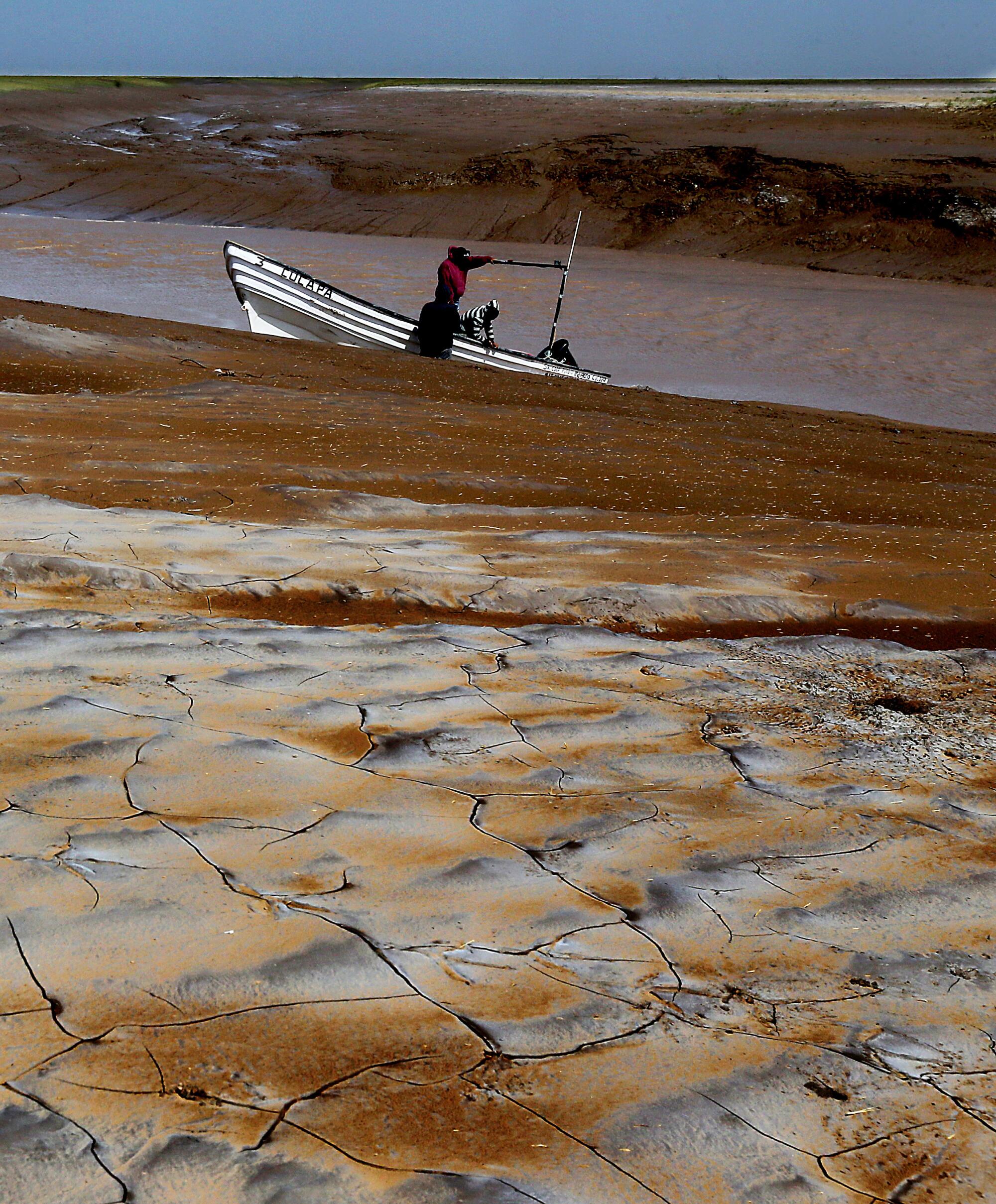
The river’s crisis also presents a pivotal moment for farms and cities to adapt, De la Parra said.
“I’m hoping that we can really understand that crisis is not something that we ought to waste,” he said. “We need to use it to thrust ourselves into a different model.”
Las Vegas has dramatically cut water use by targeting grass. Its water czars are pushing for bigger changes to fix the Colorado River’s water deficit.
For cities, De la Parra said, that means initiatives such as recycling wastewater, capturing stormwater and probably investing in building a new desalination plant in Baja California.
For farmers, he said, there are opportunities to save water by installing efficient irrigation systems and moving away from thirsty crops like alfalfa to ones that use less water.
“It is a water revolution that needs to happen,” De la Parra said.
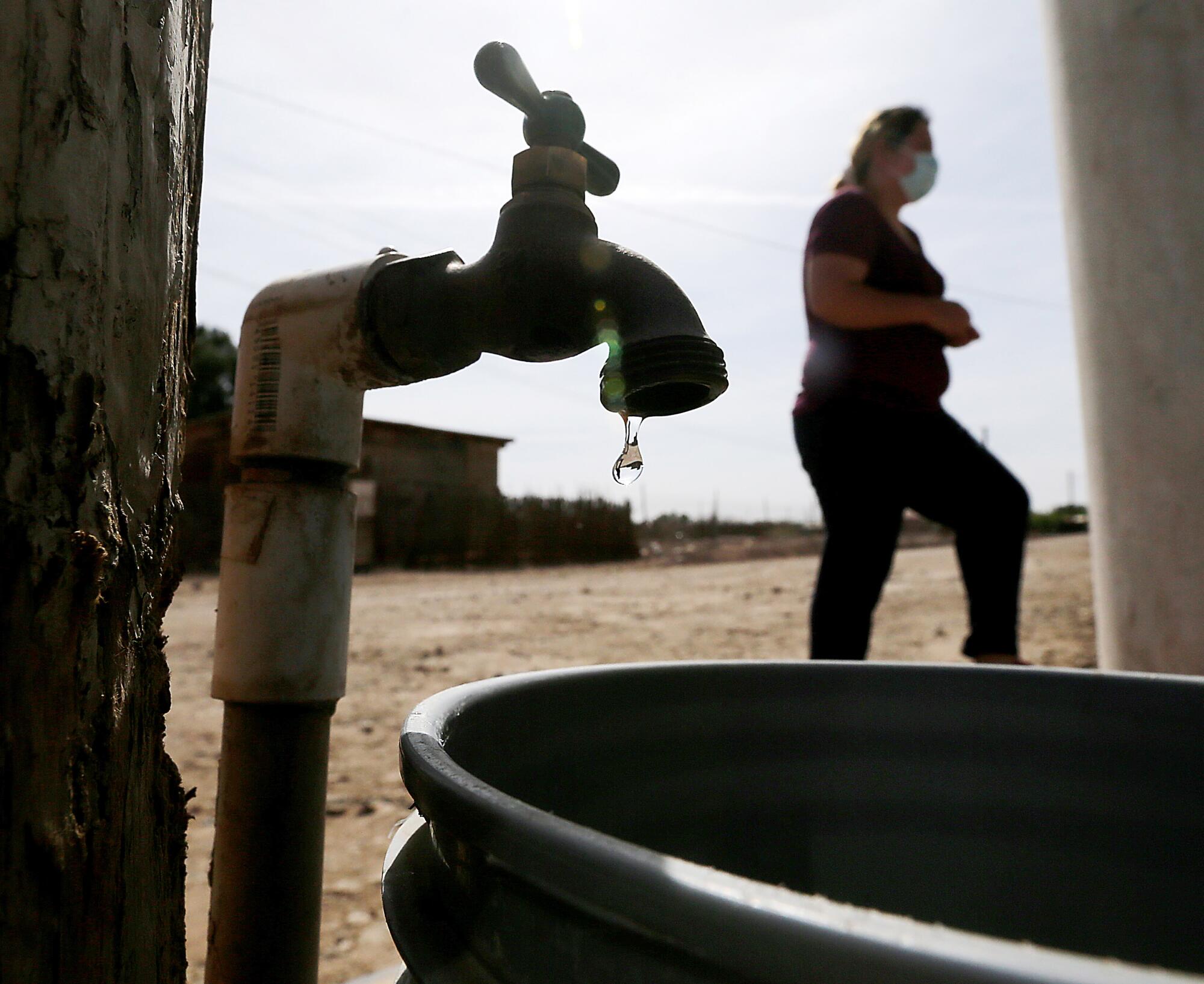
He said he’s confident people can improve their livelihoods while using less and “embracing this water revolution.” He’s also optimistic future generations can have a river delta with a functioning ecosystem.
In June, the water that was released brought back a flowing stretch of river for about 40 miles in the lower delta. The water eventually reached the Gulf of California during high tide.
As the federal government pushes states to reduce usage of dwindling Colorado River water, Imperial Valley farmers fear a “worst-case” scenario.
The flowing river attracted attention. Beside a road, where the riverbed was transformed into a wide pond, families began coming to relax on the weekends and children waded in the water.
Angela Melendez, who works for the conservation group Sonoran Institute, said she felt excited and emotional seeing the river come back.
She said it hurts “when our environment is degraded and hurt and exploited.” When the river doesn’t reach the sea, she said, “it’s like if one of your veins didn’t reach the heart.”
A visual journey along the Colorado River, from the headwaters to Mexico, that shows the environmental toll on the depleting resource.
Most of the time, the estuary is starved of a river. The shores near the river’s mouth have long been sculpted by the incoming and outgoing tides, which have left branching treelike patterns imprinted in the sands.
The Native Cucapá people who live in the delta have traditionally depended on fishing. The Cucapá still push wooden boats into the estuary to fish for corvina. But there are fewer fish than there used to be.
Hilda Hurtado Valenzuela, a 68-year-old tribal member and president of a Cucapá fishing cooperative, said that when she was growing up, the river always had water. Willows stood along the banks, and her mother would bend a wire to make a hook, baiting it with a piece of tortilla.
As climate change and overuse threaten the Colorado River, Native American tribes seek a larger role in the river’s stewardship.
“There were a lot of fish because the river always brought water,” Hurtado said. “Not anymore. Now it doesn’t have anything.”
She said the freshwater flowing into the saltwater creates vital habitat for fish to reproduce in the estuary. Without that water flowing in, she said, the fish have suffered.
“The Colorado River Delta should have water,” Hurtado said, sitting outside her home in the town of El Indiviso. “Fishing for the Cucapá people is what we live from, how we feed ourselves, but it’s also part of our culture. The Colorado River is part of our culture.”
She said she worries a time will come when the remaining fish disappear because there is no water flowing.
“We would like to see a river with life,” she said. “We need the Colorado River’s water for the survival of the fish, but also for the survival of the Cucapá people.”
So much could be saved, she said, if even a small amount of water were set aside to let the river be a river again, and flow to its end.
